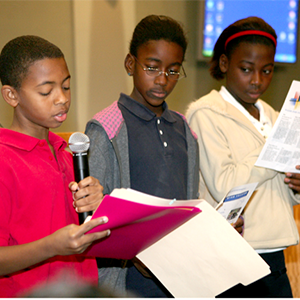Back to: Environmental Biology 300 Level
Welcome to class!
One of the most exciting parts of your journey as an environmental biologist is sharing your ideas and research with others. Whether you’re presenting a project on cleaning up polluted rivers in Ibadan or conserving mangrove forests in Bayelsa, your presentation is a chance to inform, inspire, and influence action. Today’s class is all about Student Project Presentations—especially on themes like conservation and pollution control.
Student Project Presentations
What Are Student Project Presentations?
Student project presentations are structured opportunities for you to share your research work, findings, and recommendations with your lecturers, classmates, or even the community. They help you develop communication skills and demonstrate your understanding of environmental issues.

Why Are They Important?
They help you communicate environmental data and solutions clearly.
They build your confidence as a young researcher and advocate.
They offer real-world impact—especially when focused on urgent issues like pollution and conservation.
They promote teamwork, creativity, and problem-solving.
Choosing a Project Topic
When choosing a project, focus on a real-life environmental challenge in your community. Some example themes include:
Reducing plastic waste in urban areas
Conserving endangered species in a local forest reserve
Evaluating the impact of oil spills on coastal water quality
Promoting waste segregation and recycling in schools
Community-based clean-up of a polluted water body
Structure of a Good Presentation
Title Slide: Clear and concise title of your project.
Introduction: Brief background and why the topic matters.
Objectives: What you aimed to achieve with the project.
Methodology: How data was collected and analysed.
Findings/Results: Charts, photos, and key observations.
Discussion: What the findings mean in real-world terms.
Conclusion and Recommendations: Wrap up and offer practical solutions.
Acknowledgement: Mention support from group members, communities, or mentors.
Questions: Invite feedback or questions from your audience.
Presentation Tips
Use visuals like graphs, photos, and videos to keep it engaging.
Speak clearly and avoid too much jargon.
Practise beforehand and keep to time.
Tell a story—connect emotionally to the problem and the solution.
Be confident and passionate about your topic.
Examples from Nigerian Students
A student group from UNIBEN presented a plastic recycling project that turned waste bottles into eco-bricks for building footpaths.

Another project from FUTA focused on restoring a degraded swamp by planting native vegetation and tracking soil quality.
A team at Ahmadu Bello University launched a public awareness campaign to reduce open burning in Zaria markets, backed by air pollution data they collected.
Summary
- Student project presentations allow you to share findings and solutions on environmental issues.
- Projects on conservation or pollution control are impactful and locally relevant.
- A good presentation includes introduction, objectives, methods, results, and recommendations.
- Nigerian students have used projects to tackle real problems like waste, pollution, and habitat destruction.
- Clear communication, visuals, and passion make a presentation successful.
Evaluation
- Why are student project presentations important?
- Mention three elements of a good presentation.
- Give two examples of project themes related to conservation or pollution control.
- List two tips for making an effective presentation.
- What did the UNIBEN student group use plastic waste to create?
You’re doing a fantastic job building your voice in environmental science. Your research and presentations have the power to transform communities. Keep speaking up, showing up, and shining bright. Afrilearn is cheering you on every step of the way!
